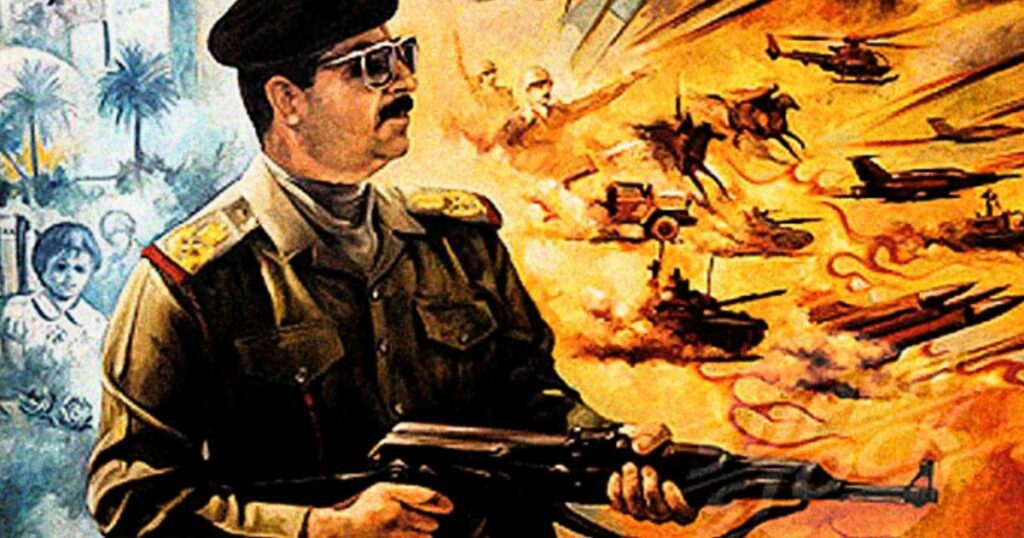During the First Gulf War, Saddam Hussein’s Iraqi Army learned the hard way. The United States Army, famous for having fewer horses and bayonets than it once did, chose not to fight the war as Saddam had hoped. But did you know what military strategy Hussein employed during the gulf war?
During the Gulf War, Saddam Hussein constructed a defensive line of trenches and tunnels to engage the coalition in trench warfare akin to World War I. Instead, US forces charged into the Iraqi trenches with modified bulldozers, burying many alive.
Invading Kuwait
In August 1990, Iraq invaded Kuwait and overthrew the unprepared country in 12 hours. President George H.W. Bush launched Operation Desert Shield in response to the invasion. The US military began assembling forces in the area in case Iraq refused to leave Kuwait. By November 1990, the United Nations Security Council had given Iraq until January 15, 1991, to leave.
But Saddam wasn’t about to sit there and get his buttocks kicked. He sent an estimated 100,000 to 300,000 troops to greet the Americans and their coalition partners in Kuwait. The deadline of January 15 had passed, and the Mother of All Battles had begun.
Operation Desert Shield became Operation Desert Storm on January 17, 1991. Before the ground war began, the US-led coalition waged Noah’s Ark-style air campaign for 40 days and 40 nights. Coalition forces advanced toward Kuwait. That’s when they discovered the Iraqis had dug in.
Iraq’s first line of defense was the Saddam Line, a series of trenches, some filled with oil to be ignited), sand berms, trench works, anti-tank ditches, barbed wire, and minefields. It was all that kept the coalition’s allies from entering Kuwait. The liberation of Kuwait attack began at 4 AM. The Saddam Line of trenches was the first stop along the way, at 10 AM local time. The allies had crossed the Saddam Line and were deep inside Kuwaiti territory by 6:45 AM. (Source: Military)
How Effective was the Bulldozer Tactic?
Nothing they had to work with in World War I was the key to their success; there were no bayonets, trench brooms, or chemical warfare. Instead, the United States 1st Infantry Division used minesweeping plows mounted on tanks alongside combat earthmovers in what became known as the bulldozer assault.
Instead of clearing the trenches man by man, the Americans plowed through the Iraqis on combat earthmovers, burying some defenders alive as they attempted in vain to shoot the bulldozers.
Because they were all inside armored vehicles and the Iraqi ground forces had no answer for them, the Americans suffered no casualties in the assault. As the Iraqis witnessed their comrades being buried alive, they began to surrender in large numbers.
In just a few hours, 70 miles of trenches were plowed over. Of the 8,000 defenders, approximately 2,000 surrendered. It is unknown how many Iraqi soldiers were buried in the onslaught. (Source: Military)
Image from WeAreMighty
